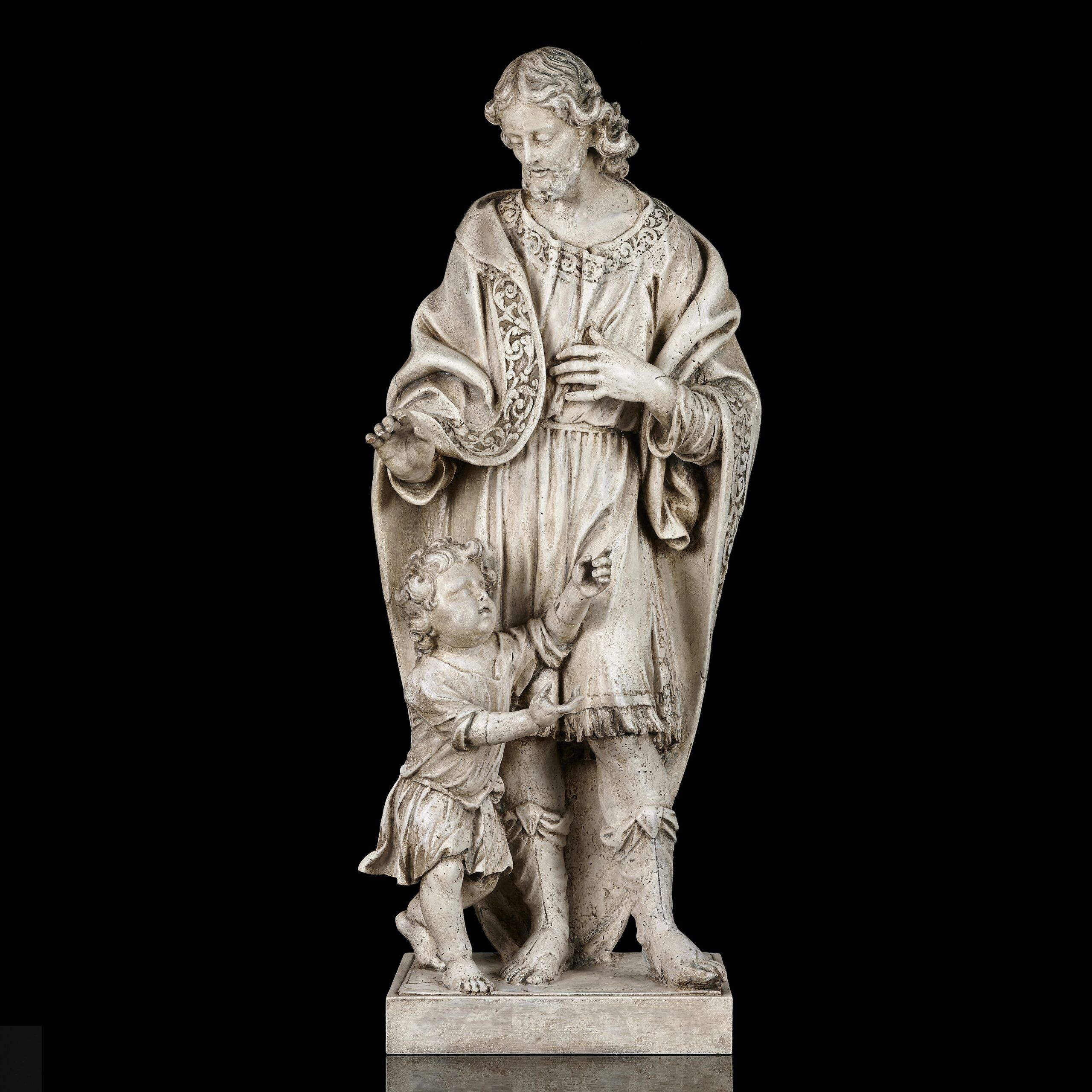Antwerp, 1654 – Antwerp, 1724
Saint Joseph and the Christ Child
Lime-wood I With traces of original gesso and monochrome
H. 98 cm.
PROVENANCE
Private collection, Belgium
REFERENCE LITERATURE
Van Herck, Ch. (1940). ‘Hendrik Frans Verbrugghen. Antwerpsch beeldhouwer 1654-1724’, ‘In: Jaarboek van Antwerpen’s Oudheidkundige Kring, nr. 16, p. 68, nr. 134, pl. VII;
Hemeldonck, G. van & Kockelbergh, I. (1985). ‘De werken van de meester beeldhouwer Henricus Franciscus Verburggen in de abdijkerk te Grimbergen’ In: Eigen Schoon en de Brabander, nr. 68, pp. 129-150;
Van Gerwen, Ch. (1993). Merkwaardige vrouwen. Valkenswaard: Museum Van Gerwen-Lemmens, pp. 42-43, cat. nr. 6, ill. 7;
Philippot, P. (2003). L’architecture religieuse et la sculpture baroque dans les Pays-bas méridionaux et la principauté de Liège, 1600-1770. Liège, p. 422-423
NOTE
This refined Late-Baroque sculpture in lime wood displays notable resemblances – especially regarding the typical linear drapery folds and scrolling acanthus decoration – to a lime wood Madonna and Child, H. 149,5 cm, attributed to Hendrik Frans Verbruggen and dated between 1700-1725, kept in the St. Bernardus Abbey in Bornem, Belgium (kik/irpa nr. 114900). Verbruggen and his workshop often used monochrome decorated lime wood along side marble, like the High Altar of the Saint Bavo Cathedral in Ghent (executed between 1705–1709). In addition, the present Saint Joseph displays symlarities with the pathetical pose of Saint Bavo, the pseudo-antique attire en the richly decorated mantle (kik/irpa nr. 65999). The Christ-figure of the present group displays clear symlaristies to the Infant Saint John kissing the hand of the Christ Child, painted lime wood, kept in the Onze-Lieve-Vrouwekerk, Gierle, notably to the characteristic physiognomy, anatomy and the heavily pronounced curls (kik/irpa nr. 47529).
The Flemish sculptor and draftsman Hendrik Frans Verbrugg(h)en, who is best known for his Late-Baroque church furniture, was active in Antwerp between 1682 and 1724 and led a productive and flourishing workshop. Large sculptural structures or ‘kleinarchitectuur’ like the Ghent High Altar, were executed in collaboration with master sculptor Jacobus Coppens and for polychrome and gilding with Martinus Reynevelt and Joannes van Hersecke. The present group is a fine example of the Late-Baroque sculpture procured in the Verbruggen workshop.

